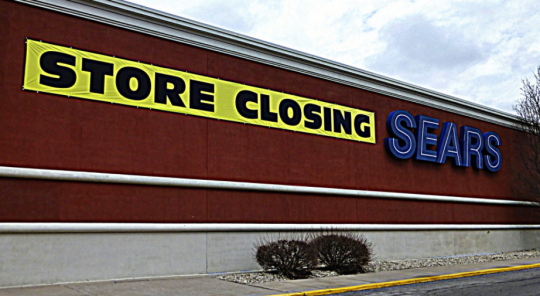
It had been predicted by multiple retail analysts for quite
some time, but the long and winding road for Sears finally reached its inevitable conclusion — bankruptcy.
The filing represents perhaps retail’s most dramatic “riches to rags” story,
and is an unfortunate indicator that even the biggest industry leaders can be
toppled if they don’t have a forward-looking strategy.
The RTP team
shares what the industry should take away from the demise of Sears, and how
struggling retailers can avoid the same fate.
Debbie Hauss,
Editor-in-Chief: Because Sears was such a retail icon for the past 130+
years, it’s painful to watch its demise. It definitely was, in some ways, the Amazon of its heyday. You could
purchase just about anything from Sears, including a home. The Sears catalog
also cemented an important place in history, by enabling African-Americans to
shop for the same products white Americans could buy. Sears barreled ahead
through the decades: The company had the largest revenue in the U.S. until
1989, when Walmart finally caught up. In 2017, Sears was the 23rd largest
retailer in the U.S. But the company leadership did not keep up with changing
consumer preferences and online competition. Don’t count out the brand just yet,
though: Chapter 11 does not mean the retailer is completely disappearing. We’ll
all be watching to see if there’s one last chance for a Sears miracle revival.
Adam Blair, Executive
Editor: By necessity, retail is totally present-focused. If the product a
customer wants isn’t on the shelf at the moment she wants it, it couldn’t
matter less if it was there an hour ago. Nevertheless, it’s interesting to take
a historical perspective and learn that, once upon a time, Sears was
both a retail innovator and a force for social and political change — just like
a certain company named after a Brazilian river is today. This NPR story reveals how, during the Jim Crow era,
the Sears catalog gave blacks, particularly those in rural areas with
limited purchasing options, the same access to consumer goods as white
Americans. Because this type of commercial
equality was a threat not just to white store owners’ businesses but also
to the very structure of Jim Crow, they would actually burn Sears catalogs in
public in an attempt to intimidate black customers and maintain their selling
power. Who knew the “Wish Book” played a part in changing the world?
Glenn Taylor, Senior
Editor: It’s hard to compare many retailers to Sears because of its size at
its peak, as well as its operations up top after Eddie Lampert took control of
the company (including Kmart). Don’t
get me wrong, both retailers had been struggling for years even
as they merged in 2005. But the retailer flat-out chose “downsizing”
at every turn, in hopes that customers would come back, but none of its efforts
worked. If anything, struggling retailers should realize that their most
valuable stores and assets are likely valuable for a reason. They can’t abandon
(or sell off) top brands and assets for quick capital, and they must still
reinvest in their own business as they seek to follow consumer trends. Sears
has made no serious reinvestment efforts; its ratio of capital expenditures to
sales dipped
from 1.01 in 2012 to 0.48 in 2018. Obviously, there’s more to
keeping a business alive than just throwing money at the next shiny new toy,
but pivoting to new customer preferences requires critical thinking —
and yes,
an expanded budget.
Bryan Wassel,
Associate Editor: Many have already pointed out that Sears was
the Amazon of its time, but while Amazon is today’s powerhouse, Sears
also was once at the forefront of innovation. The company expanded its
brick-and-mortar presence as the American suburbs grew, so a more apt modern
comparison to the old Sears might be 1-800-FLOWERS.COM. This
is a retailer that has strived to stay on top of retail trends as they appear,
first shifting from phone to Internet ordering, and more recently shifting from a “mobile-first company to an AI-first company,”
according to CEO Chris McCann at the 2018 Retail
Innovation Conference. Sears started declining when it stopped
innovating, not necessarily because it stopped being the Amazonian giant of the
day, and retailers should take heed at how even the mighty can fall when they
fail to keep up with the times.






